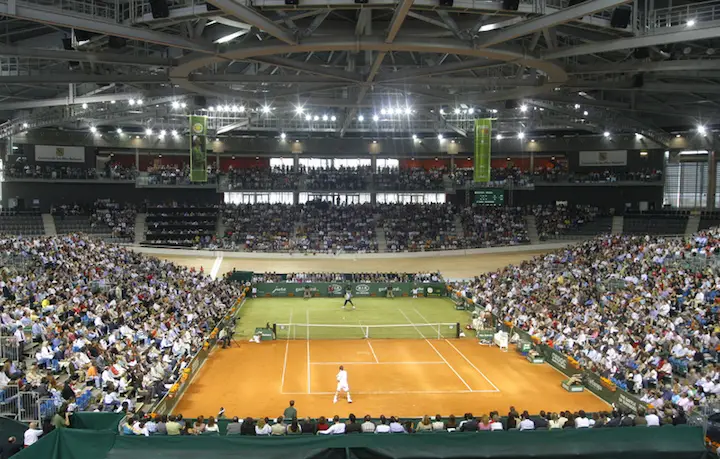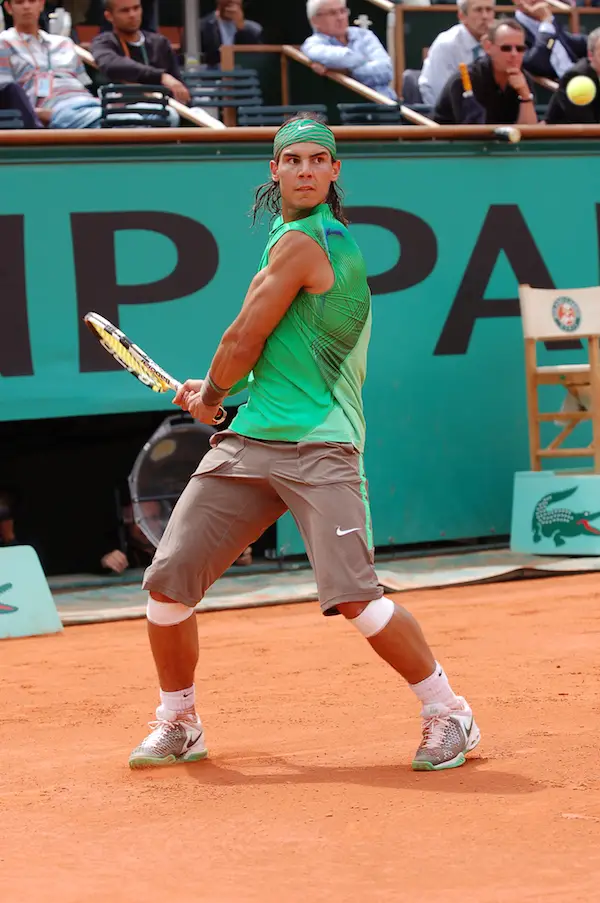Your Guide
 Gavin Davison
Gavin Davison
The Artistry of Doubles
Tennis is somewhat unique in the respect that it can be played as singles, doubles, and mixed doubles.
And to be honest with you, playing doubles can sometimes feel like a different sport entirely – especially when compared to a GAME OF SINGLES.

The most important shots are different; your court positioning needs to be different, and at risk of stating the obvious, you’ve got another player on your side of the net to worry about too.
With that said, it’s also a game that can be incredibly fun when you master the basics, and you can become a well-accomplished doubles player by fine-tuning a few important strokes.
For me, the best doubles pair there has ever been has to be the Bryan brothers, and if you want to see what AWESOME DOUBLES LOOKS LIKE, make sure you watch this video before continuing:
In this footage, you can see how they move together, communicate incredibly well, understand what shot will cause the most problems for their opponents, and so much more.
Sure, it’s pretty FAST-PACED, and there won’t be many of us that can reach the level of doubles that these guys can put together.
But then again, we can still take some of the positives and examples from their style of doubles and apply it to our own game.
On that note, let me now jump in with the five shots that will serve you best in doubles!
The Shots You Must Fine-Tune to Become a Capable Doubles Player
While I can’t promise that by mastering these shots you will be winning Grand Slam doubles events, I can guarantee that your abilities in doubles will be significantly improved.
The shots I’m about to mention might not have crossed your mind either, which makes things all the MORE EXCITING!
Let me kick things off with arguably the most important shot in doubles.
1) The Return
It’s no secret that in a competitive game of tennis, holding serve is of paramount importance.
However, if you are able to return well, you will stand a much better chance of breaking serve, and in doubles, this is ABSOLUTELY CRITICAL if you are to boost your chances of winning.
So, coming back to your return – you essentially have two options.
A) The first is usually the most preferable, and this is where you drive your return, ideally cross-court, and therefore neutralize the point immediately.
Driving the shot low will keep it away from the opposing net player, or if you are returning a second serve, you can always step up and drive it at the net player.
This might be frowned upon by some, but you can always apologize after the game!
B) The second option you have when returning is something that can be very useful if you have two players that love to come into the net as soon as possible.
Rather than driving your return cross-court on a first serve, or down the line on a second serve, you can hit a lob down the line and steal the net from your opponents.
By doing this, instead of neutralizing the point, you will get yourself into an attacking position with just one shot.
2) The First Serve
Given how important it is to hold serve in doubles, as you’d probably expect, the first serve is another shot that is essential.
But unlike in a game of singles, where you might find guys trying to hit it as hard as possible to get cheap points, in doubles, players tend to go for HIGHER PERCENTAGE PLAYS.
The reason for this is actually quite simple – if you make your first serve, it brings your partner into play at the net, and they can (hopefully) pick off an easy volley to win the point quickly.
But how do you increase the consistency of your first serve while still keeping it dangerous and difficult to return? The answer is more simple than you think – spin.
Personally, I like to use plenty of slice on my first serve in doubles.
This SLOWS DOWN THE BALL in the air and ensures that there is plenty of movement, making it more difficult for the opponent to get a clean strike on the return.
By doing this, there’s also a much higher chance that I will make the first serve, and avoid the dreaded second serve in a game!
Trust me, your partner will thank you for this when they’re not on the receiving end of a speedy return right at them. You can find a more comprehensive description of how to do this right here.
3) The First Volley
In doubles, assuming you are playing a very attacking style, the objective is to get to the net and kill the point.
So if you are serving, you may well be hitting the first serve and rushing to the net.
However, here’s where it can get tricky – you won’t have time to get all the way to the net in order to hit your first volley.
In fact, if you face a couple of good returners, you will likely be hitting your first volley from behind the service line, which isn’t all that easy.
Not only do you have to stop and split step when they are hitting the return, but you must also keep a low position, spring through the volley with your legs.
And aim to hit the volley deep cross-court to maintain your attacking position.
If you’re not overly comfortable with volleys, make sure you check out these tips from one of the best that has ever lived – Pat Rafter.
4) The Lob
When you play against good, attacking net players in doubles, it can seem like you are hitting against a brick wall.
And we all know how the outcome is when we play against a brick wall – WE RARELY GET THE WIN!
But this is what good doubles players do to you, they rush the net, dominate with aggressive volleys, and rush you at all times!
Here’s another thing you might notice when you come across these guys however, they will usually get quite tight on the net.
So rather than relentlessly trying to hit through them at the net, if you are able to switch things up with a lob, you can change the entire picture and court position with one shot.
Ideally, you should be hitting this lob with plenty of topspin to bring the ball down quickly and give yourself a little more margin for error.
5) The ‘Poach’ Volley
If you’ve stepped onto the court with a coach before, and you hear them constantly shouting ‘poach,’ that’s because it is one of the top five most critical shots in doubles.
Simply put, a poach volley is where you come across and intercept a groundstroke from your opponents, and the whole objective of doing this is to end the point.
To successfully poach, you should wait and see whether the player on the baseline in front of you is under pressure, and then go for it!
Make sure you step diagonally into the ball, spring with your legs into the shot, and aim the volley in the direction of the net player to kill the point.
This takes a bit of practice, so stay patient and make sure you attempt to do this on both the forehand and backhand sides – as you need to become proficient with each.


